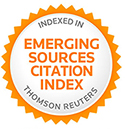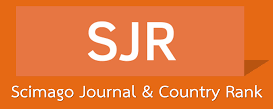Mapeo de uma región arrocera en Sudamérica utilizando Geo Big Data y Sentinel 2
Resumen
Geo Big Data y Sentinel-2 son eficientes para cartografiar arrozales y otras categorías de uso y cobertura del suelo. Dada la relevancia ambiental de la cuenca de la Laguna Merín y su rol en la producción arrocera del Uruguay, con este trabajo se pretendió: 1) mapear los arrozales y clases generales de uso y cobertura del suelo; 2) comparar el desempeño de Random Forest y Support Vector Machine para clasificar dos juegos temporales Sentinel-2, y 3) identificar las bandas más importantes según Random Forest. Los materiales incluyen las imágenes y clasificadores mencionados, Google Earth Engine, GEEMAP, y GridSearchCV de Python. Como métodos, destacan el ajuste de hiperparámetros, la clasificación supervisada, y el cálculo de métricas de precisión. Estas últimas sugieren que los cuatro mapas aportan resultados óptimos. Las bandas infrarrojas cercano y de onda corta son las más relevantes para clasificar. Futuras iniciativas deben enfocarse en integrar imágenes de sensores diversos y utilizar series temporales distintas a las aquí empleadas.
Recibido: septiembre, 2024/ Aceptado: enero, 2025
Palabras clave
Texto completo:
PDF (English)Referencias
ACHKAR, M.; DOMÍNGUEZ, A. y F. PESCE. 2012. Cuenca de la Laguna Merín – Uruguay: Aportes para la discusión ciudadana. Redes – Amigos de la Tierra. Montevideo, Uruguay.
ADUGNA, T.; XU, W. & J. FAN. 2022. “Comparison of random forest and support vector machine classifiers for regional land cover mapping using coarse resolution FY-3C images”. Remote Sensing, 14(3): 574.
ALCIATURI, G.; UMPIÉRREZ, R.; AGUDELO, F.; PANZL, R. y V. FERNÁNDEZ. 2023. Una propuesta para cartografiar el uso/cobertura de suelo mediante el Geo Big Data. Uruguay, año agrícola 2021-2022. XVIII Conferencia Iberoamericana de Sistemas de Información Geográfica. pp. 85-92. Cáceres, España. (Extended abstract).
HUANG, S.; TANG, L.; HUPY, J.; WANG, Y. & G. SHAO. 2021. “A commentary review on the use of normalized difference vegetation index (NDVI) in the era of popular remote sensing”. Journal of Forestry Research, 32(1): 1-6.
HUANG, C. & C. ZHANG. 2022. “Time-series remote sensing of rice paddy expansion in the Yellow River Delta: towards sustainable ecological conservation in the context of water scarcity”. Remote Sensing in Ecology and Conservation, 9(4): 454-468.
HUETE, A.; DIDAN, K.; MIURA, T.; RODRIGUEZ, E.; GAO, X. & L. FERREIRA. 2002. “Overview of the radiometric and biophysical performance of the MODIS vegetation indices”. Remote Sensing of Environment, 83(1-2): 195-213.
INALPULAT, M. 2023. “Comparison of Different Supervised Classification Algorithms for Mapping Paddy Rice Areas Using Landsat 9 Imageries”. Turkish Journal and Nature and Science, 12: 52-59.
KUENZER, C. & K. KNAUER. 2013. “Remote sensing of rice crop areas”. International Journal of Remote Sensing, 34(6): 2101-2139.
MARCOT, B. & A. HANEA. 2021. “What is an optimal value of k in k-fold cross-validation in discrete Bayesian network analysis?”. Computational Statistics, 36(3): 2009-2031.
MENG, X.; XIE, S.; SUN, L.; LIU, L. & Y. HAN. 2023. “Evaluation of temporal compositing algorithms for annual land cover classification using Landsat time series data”. International Journal of Digital Earth, 16(1): 2574-2598.
MINISTERIO DE GANADERÍA, AGRICULTURA y PESCA (MGAP). 2020. Encuesta de arroz. Zafra 2019 – 2020. Informe anual. Montevideo, Uruguay.
PITTELKOW, C.; ZORRILLA, G.; TERRA, J.; RICCETTO, S.; MACEDO, I.; BONILLA, C. & A. ROEL. 2016. “Sustainability of rice intensification in Uruguay from 1993 to 2013”. Global Food Security, 9: 10-18.
RAMO, R. & E. CHUVIECO. 2017. “Developing a Random Forest Algorithm for MODIS Global Burned Area Classification”. Remote Sensing, 9(11): 1193.
REINERMANN, S.; ASSAM, S. & C. KUENZER. 2020. “Remote Sensing of Grassland Production and Management: a Review”. Remote Sensing, 12(12): 1949.
SAHOUR, H.; KEMINK, K. & J. O’CONNELL. 2022. “Integrating SAR and Optical Remote Sensing for Conservation-Targeted Wetlands Mapping”. Remote Sensing, 14(1): 159.
SHETTY, S. 2019. Analysis of Machine Learning Classifiers for LULC Classification on Google Earth Engine. Faculty of Geo-Information Science and Earth Observation. University of Twente. Enschede. The Netherlands. Master dissertation.
SIMÓN-SANCHEZ, A.; GONZALEZ-PIQUERAS, J.; DE LA OSSA, L. & A. CALERA. 2022. “Convolutional Neural Networks for Agricultural Land Use Classification from Sentinel-2 Image Time Series”. Remote Sensing, 14(21): 5373.
STANIMIROVA, R.; GRAESSER, J.; OLOFSSON, P. & M. FRIEDL. 2022. “Widespread changes in 21st-century vegetation cover in Argentina, Paraguay, and Uruguay”. Remote Sensing of Environment, 282: 113277.
TOBAR-DÍAZ, R.; GAO, Y.; MAS, J. y V. CAMBRÓN-SANDOVAL. 2023. “Clasificación de uso y cobertura del suelo a través de algoritmos de aprendizaje automático: revisión bibliográfica”. Revista de Teledetección, 62: 1-19.
VAN NIEL, T. & T. McVICAR. 2004. “Current and potential uses of optical remote sensing in rice-based irrigation systems: a review”. Australian Journal of Agricultural Research, 55(2): 155.
WEI, J.; CUI, Y.; LUO, W. & Y. LUO. 2022. “Mapping Paddy Rice Distribution and Cropping Intensity in China from 2014 to 2019 with Landsat Images, Effective Flood Signals, and Google Earth Engine”. Remote Sensing, 14(3): 759.
ZARZA, R.; CAL, A.; FORMOSO, D.; MEDINA, S.; REY, D. & L. CARRASCO-LETELIER. 2022. “First delimitation and land-use
ZHANG, W.; LIU, H.; WU, W.; ZHAN, L. & J. WEI. 2020. “Mapping rice paddy based on Machine Learning with
Sentinel-2 multi-temporal data: model comparison and transferability”. Remote Sensing, 12(10): 1620.
ZHANG, T.; SONG, J.; FAN, Y.; LIU, Y.; YU, S., GUO, D. &…K. GUO. 2023. “Vegetation Index Research on the Basis of Tree-Ring Data: Current Status and Prospects”. Forests, 14(10): 2016.
ZHAO, R.; LI, Y. & M. MA. 2021. “Mapping paddy rice with satellite remote sensing: a review”. Sustainability, 13(2): 503.
ZHU, Y. 2019. “Geospatial semantics, ontology and knowledge graphs for Big Earth Data”. Big Earth Data, 3(3): 187-190.
ZORILLA, G. 2015. “Uruguayan rice: the secrets of a success story”. Rice Today, 14: 18-19.
Enlaces refback
- No hay ningún enlace refback.
DOI: https://doi.org/10.53766/RGV
La Revista Geográfica Venezolana se encuentra actualmente indizada en:
 |  |  | |
 |  |  |  |
 |  |  |  |
![]()
Todos los documentos publicados en esta revista se distribuyen bajo una
Licencia Creative Commons Atribución -No Comercial- Compartir Igual 4.0 Internacional.
Por lo que el envío, procesamiento y publicación de artículos en la revista es totalmente gratuito.

